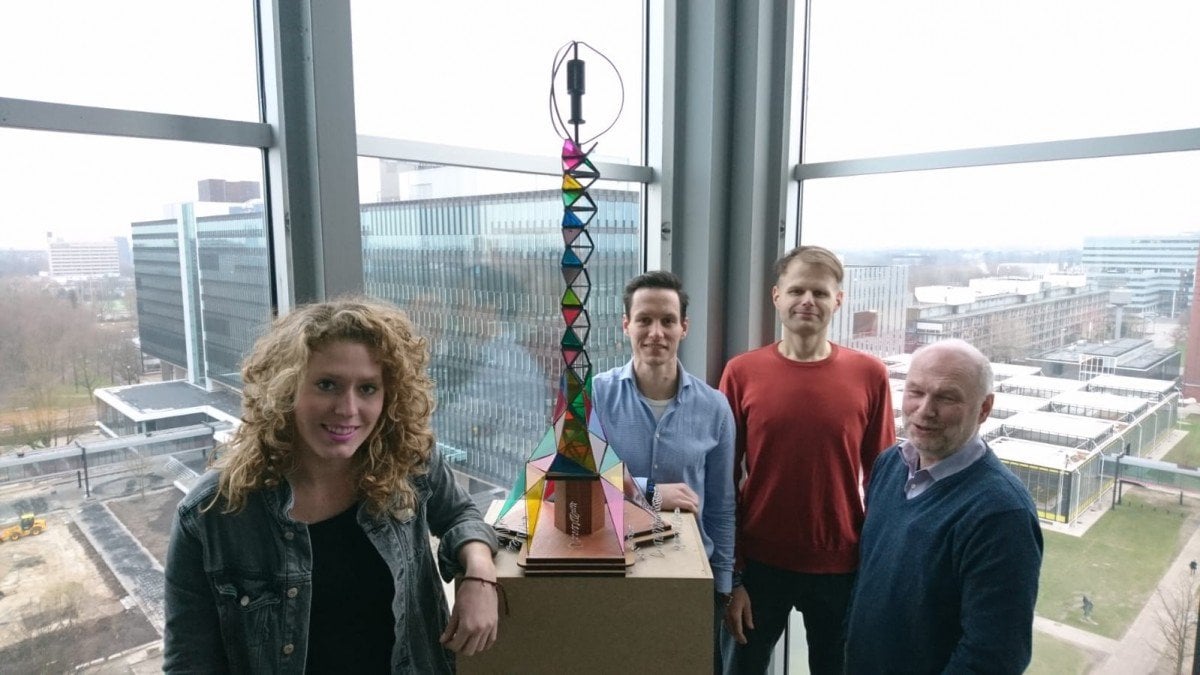
The festival season is coming! Big festivals create an atmosphere for people to relax, to enjoy the music, to liberate themselves from their daily routine and to experience the sense of belonging to the community of like-minded peers. But festivals also create a significant environmental impact and it comes not only in a form of assorted wastes left on the festival grounds but also in a form of carbon emission, a great part of which comes with the production of electricity for the event. This happens because festivals are set up off-grid and the energy for them, as a rule, is produced by diesel generators. If the Netherlands’ summer festivals cut their diesel consumption by 10%, over 1.000.000 litres of diesel and over 3,000 tonnes of CO2 will be saved annually. With the latest advances in renewable energy technologies, this goal became attainable. Now an international project initiated by Eindhoven University of Technology (TU/e) is finishing the development of the solution for powering the festivals with clean energy – GEM Tower.
GEM Tower – hybrid renewable energy system
“I have gone to many festivals for the past several years and when I went backstage, what I always saw were diesel generators producing electricity for the event,” says Faas Moonen – an associate professor of Innovative Structural Design at TU/e. “Diesel generators on the festivals work in a very inefficient mode, emit lots of CO2, produce loud droning noise and bad smell. If you go backstage during the festival, you will know why you need to do something about the energy,” says Moonen.
That is why Moonen and nine other partners started the development of GEM Tower – the hybrid unit that produces renewable energy for the festivals. “We work on GEM Tower project together with several festival directors to meet the actual needs of the festival,” says Moonen.
The hybrid unit developed by GEM-team looks like a metal tower 22 metres high, covered in colourful solar panels and topped with a wind turbine provided by the partner – IBIS Power. The uniqueness of GEM Tower is in the combination of different sources of energy. “When I asked the festival organizers why they use diesel generators only, they said that they would like to have a greener alternative but nothing except diesel generators can work reliably enough to meet the security requirements,” Moonen says. “Solar cells would not produce enough power on a cloudy weekend, so there should be a complete backup. That is why in GEM Tower we combine solar energy and wind because statistically on the days when there is no sun, there is wind and when there is hardly any wind, there is lots of sun. Several days in a year are foggy winter days – with no sun or no wind – but on those days there are hardly any festivals at all. Additionally, GEM Tower has a powerful battery by the partner from the UK Off Grid to supply energy in between wind and solar. If there is no solar power or wind power and if the battery is not enough, GEM Tower has a generator that works on biofuel – used cooking oil. This generator still has some sustainability issues, but the Tower is designed in such a way, that this source of energy will be used as little as possible. It is built into GEM Tower because the festivals need to have 100% electricity security for safety reasons – there are large amounts of people there, so a sudden power shut down is something that should be prevented.”
The sources of energy
The GEM Tower is 22 meters high because the wind turbine should be placed at a height of at least 20 meters for harvesting wind energy. Faas Moonen explains that when the tower is lower, the wind velocity is reduced due to the obstacles on the ground, so there is not enough energy to produce. GEM Tower has a vertical axe windmill on the top – it makes less noise than a horizontal axe.
GEM Tower is made of steel. The makers of the Tower chose that material because it creates the weight to hold the whole structure in place. The Tower cannot be fixed to the ground with any kind of anchor, because if it needs to be installed in a city centre, there would be cables and sewers under the ground that can be easily damaged, so in such cases, the substantial weight of the unit would make it stand-alone stable. The Tower is, however, easy to disassemble due to its foldable design.
The surface of the hybrid unit is covered with solar cells – as well as the surroundings of the Tower. Solar panels of GEM Tower contain luminescent solar concentrators – this technology is based on the research done in the chemical department of TU/e. “Our solar panels work in the following way: when you have a transparent panel and non-transparent surface under it, the light comes through the transparent layer and hits the opaque surface. After this, the wavelength of the light changes and it cannot come through the transparent surface anymore, so it is trapped inside of the panel and it is transferred to the collectors on the sides (similar technology is also used by the startup Lusoco from TU/e). This technology allows to make the panel colourful – luminescent solar concentrators or LSCs are available in four different colours. We are using all of these colours in our GEM Tower,” says Faas Moonen.

“What is great about LSCs, they don’t work on sunlight – they work on light in general, so even if the panels are in the shade, they still can transfer the light to the sides of the panels. The efficiency of LSC panels is currently not very high, but we have a large surface panelled with them on our tower. The solar panels there are not for efficiency only, they also serve for the purposes of design and architecture – the festivals should be bright and colourful! In addition to its main function – powering the festival – GEM Tower will be a landmark of the festival grounds because of its height, so it should look nice. We combine architecture with the energy production technology and with the needs of the festivals – and I think that is the strongest point of GEM Tower,” concludes Moonen.
GEM Tower is expected to be tested on the festivals in August-September 2019.

